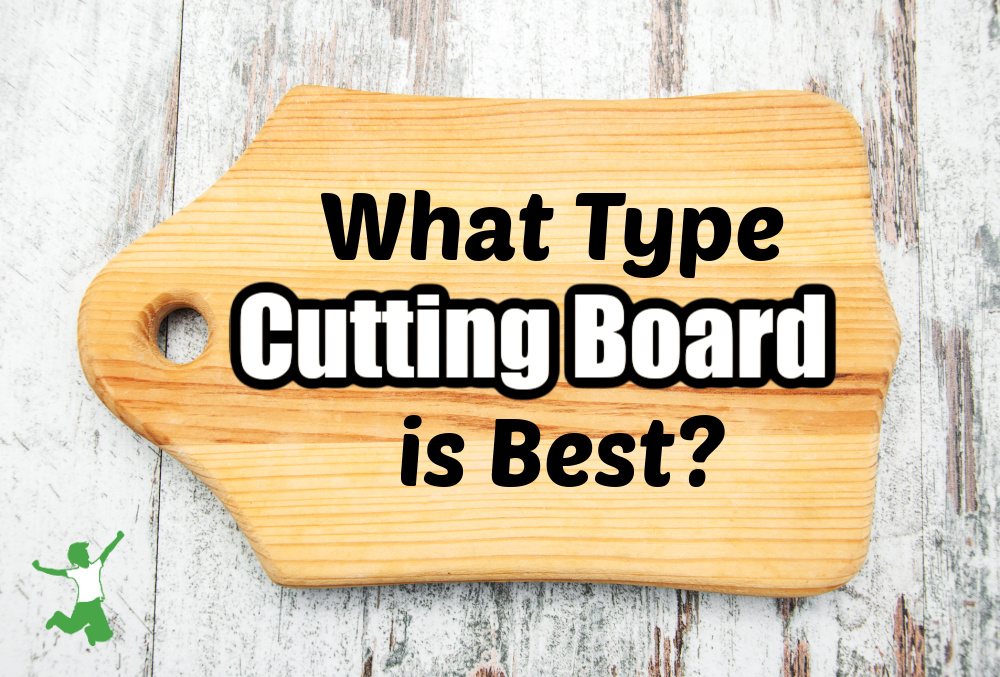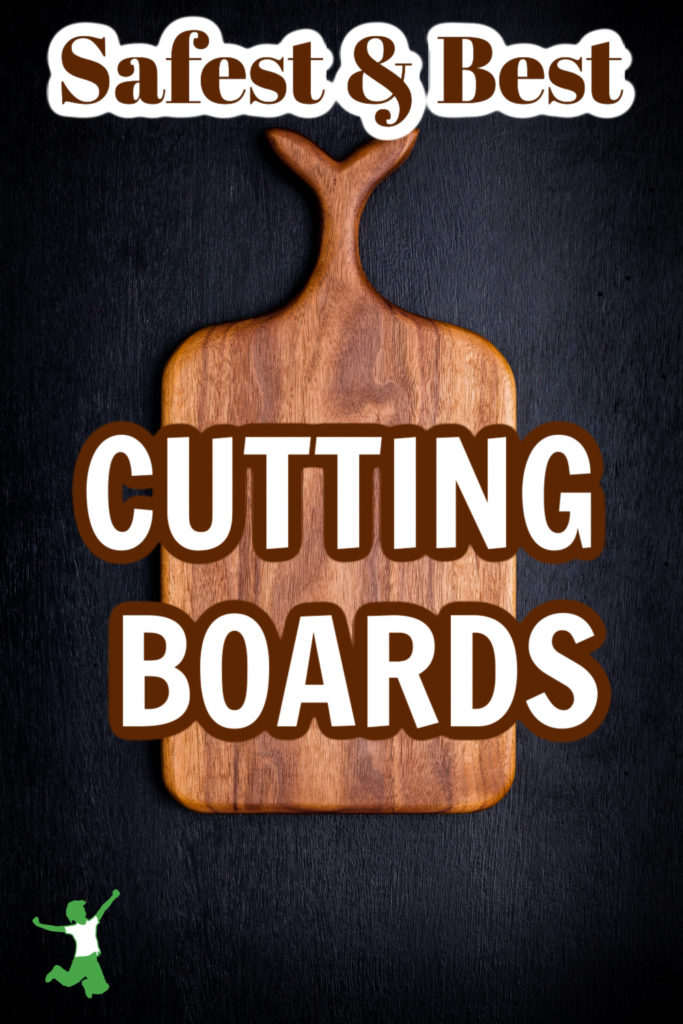Comparison of the various types of cutting boards and whether plastic is truly safer and better than wood as claimed.
Cutting boards of various shapes and sizes are very important tools in any home where meals are freshly prepared.
As for the best cutting boards, however, which material is truly optimal for food prep safety?
Are plastic or wood cutting boards preferable?
The answer might surprise you!
Restaurants Consider Plastic Cutting Boards Safer
Plastic has long been considered superior to wood.
For this reason, people have generally preferred this type of material in the name of food safety.
The prevailing wisdom is that plastic is less hospitable to bacteria, and therefore, would be safer.
Most restaurants use plastic for this reason. It is considered more sanitary by the industry because it is easier to wash and does not absorb food juices. (1)
But…is this really true?
Research Compares Plastic vs Wood
Research simply does not bear this out in practice, however.
As it turns out, wood is much less likely to harbor pathogenic bacteria than plastic!
Wood by far makes for the safest cutting boards to use in your home!
The research conducted by food microbiologists at the College of Agricultural and Life Sciences at the University of Wisconsin-Madison discovered that wood somehow eliminates bacteria but plastic does not. (2)
The manner in which the bacteria perished on the wood but not on the plastic is not known.
The scientists found that 3 minutes after contaminating a wooden cutting board, 99.9% of the pathogenic bacteria had died, while none of the bacteria died on plastic.
In addition, bacteria held at room temperature overnight on a plastic cutting board increased in number.
Surprisingly, the researchers could not find any bacteria present on wood treated in exactly the same manner!
So it seems that the prevailing “wisdom” that plastic is safer than wood is not true after all.
Wooden cutting boards are the best and safest choice after all.
Why is Plastic Unsafe?
I was happy to discover this information as I have always intuitively preferred wood over plastic cutting boards.
For one thing, wood is more stable than plastic during chopping. In my experience, you are far less likely to experience an injury when chopping meat and veggies on wood.
In addition, I have always thought that little bits of plastic or chemicals must be somehow released into the food from the repeated exposure to a sharp knife.
I have not seen evidence of this in the research. It just seemed to be common sense. Hence, I have stayed away from plastic and have always stuck with wood.
In particular, I have steered clear of plastic cutting boards with special antimicrobial surfaces.
Any product that boasts that it is antimicrobial screams “hormone-disrupting chemicals”, so I avoid them like the plague.
Best Type of Wood
For the best cutting boards, it is best to stick with old-fashioned wood block.
Do not use cheaper boards made with bonded wood pieces. The glue holding the board together can be toxic.
In addition, avoid “pre-oiled” wood boards. Oil them yourself at home with unrefined coconut or olive oil.
My choice is unfinished organic bamboo butcher block (like this one) as it is a sustainable, fast-growing natural resource that is manufactured in a safe manner as well.
Are Probiotics the Reason Wood is Best?
As an aside, I have a theory about why pathogenic bacteria are unable to survive on wood boards but instead grow exponentially on plastic.
Lactobacilli is a beneficial bacteria on the surface of all natural things. This includes our own skin. This beneficial microbe kills off pathogens that are within its vicinity.
This is why grassfed raw milk is safer than pasteurized. The naturally occurring probiotics “crowd out” any pathogens that might get into it.
Heat-treated foods just get contaminated if the same thing were to happen.
Perhaps this is the same method for how pathogens on wood cutting boards are destroyed within 3 minutes, yet this same thing does not happen on plastic?
(1) Why Don’t Restaurants Use Wooden Cutting Boards
(2) Wood Cutting Boards, Not Plastic, Are Safer for Food Prep










I was wondering about the titanium boards I have seen online…
I don’t like them personally.
I would assume bamboo cutting boards have lots of glue in them…since one piece of bamboo is not going to make a full cutting board. How do we know the linked bamboo cutting board above isn’t made with toxic glue?
Best to get wooden cutting boards made with a solid piece. There are also some nontoxic glues … sauna companies sometimes use them and advertise this fact.
Is acacia wood treated with insecticide chemicals? It can come from various Asian countries, and it’s often touted as non-toxic. However, is it true that these products are treated with something to prevent pest infestation while growing. And what about coming from other countries? I believe things are sprayed down before allowed into our country. How do we ever know what is really safe? I don’t trust a 20$ cutting board., either. Help!
You can never fully know if something is fully safe, unless you are at the mill or when they make those boards. However… it is highly unlikely a manufacturer based in Asia would add cost to a wood such as Acacia which is a species that is already pest resistant.
I live in Asia. The reason your cutting board is $20 is the workers making these make $200 a month or less. While we think it’s minimal, In some countries it’s a ‘living wage’. Not great, but enough to get by.
I make my boards with Neem wood, which is very resistant to pests. As a matter of fact, many hard wood species in tropical clime are naturally resistant to pests, as termites are everywhere here. The tree therefore have been provided with a natural defence. I hope this helps.
Interesting article but not altogether accurate.
I make cutting boards and glued together type. The glues I use are food safe and made for this purpose. Therefore, if you buy from a reputable source / maker who are willing to share their process, you should not have any issues.
Any fats, including olive oil or coconut oil, will start to oxidize and eventually go rancid once exposed to air. Better to use mineral oil, Beeswax (if you’re not vegan) or Carnauba. And typically a mixture of them work quite well and better option than ‘Fats’. If you really want to use coconut oil, make sure to use ‘Refractionated’ coconut oil, as it is distilled and stable for that application.
Can you post the ingredients of the glues you use? I personally don’t trust any industrial glue to be near food that I am going to eat. Others may feel differently, but I would never buy a glued together cutting board. Do you know how many times over the years manufacturers told us something was safe only to find out it wasn’t?
Hello Sarah, you are right, of course. For that reason, I do not use plastic containers or cook with pots coated with PTFE’s (Teflon). The scientific evidence is overwhelming, these are harmful in the long term.
When there is little or no scientific evidence, erring on the side of caution might work. Such as wood glues, for example. The glues I use is from Titebond (there are other mfg’s) and is FDA Approved for indirect food contact in its ‘cured’ state. What that means is you should not drink the stuff. But when fully hardened and cured, all volatiles chemicals have dissipated. If you want to be super safe, you could expose your new cutting board to sunlight and heat for a few hours, or put it in the over on low for a few hours. This would ensure any minute amount of volatile chemicals will be released.
In daily life, we are literally swimming in airborne and liquid chemicals. Our body knows what to do with them. For my part, I choose to worry about bigger problems I have control over, since there is no evidence of cured wood glue causing issues. It’s also been in use for over 100 years (with solvents).
we use a stainless steel cutting board. this scores above wood or plastic in terms of ease of use, maintenance, and resistance to scratches, wear and tear. Get one that is not too heavy with an easy handle grip
Interesting! I haven’t seen those before. Does the knife slip on the stainless surface? This is one of the unsafe features of plastic … it is much easier to cut yourself on plastic than on wood which does not slip as the blade hits the surface.
The linked cutting board is pre-oiled. Any other independent tested cutting board recommendations?
What are your suggested methods for cleaning and preserving for wood/bamboo boards?
Sprinkle some salt or baking soda on the board. Use half a lemon to scrub, clean of the residue, et voila! Easy peasy and safe.
Wooden boards are way better than plastic cutting boards. And the best website that i found for wooden cutting boards is ironwoodgourmet.com
I’ve been using Pampered Chef plastic ones for years. I guest they have to go.